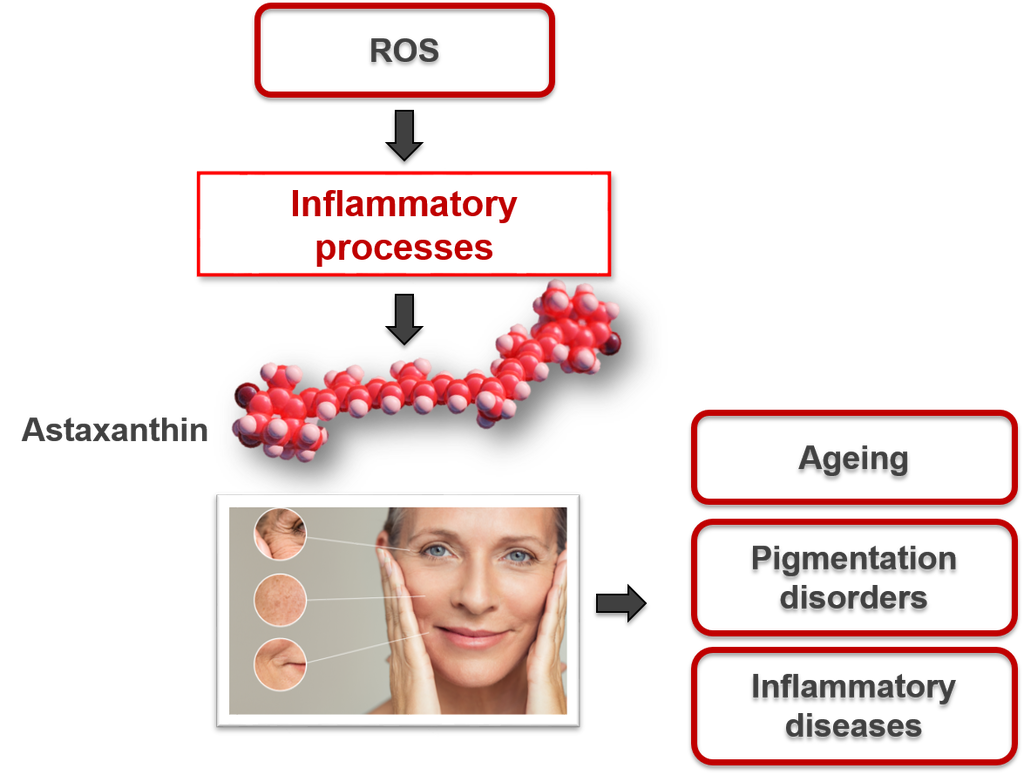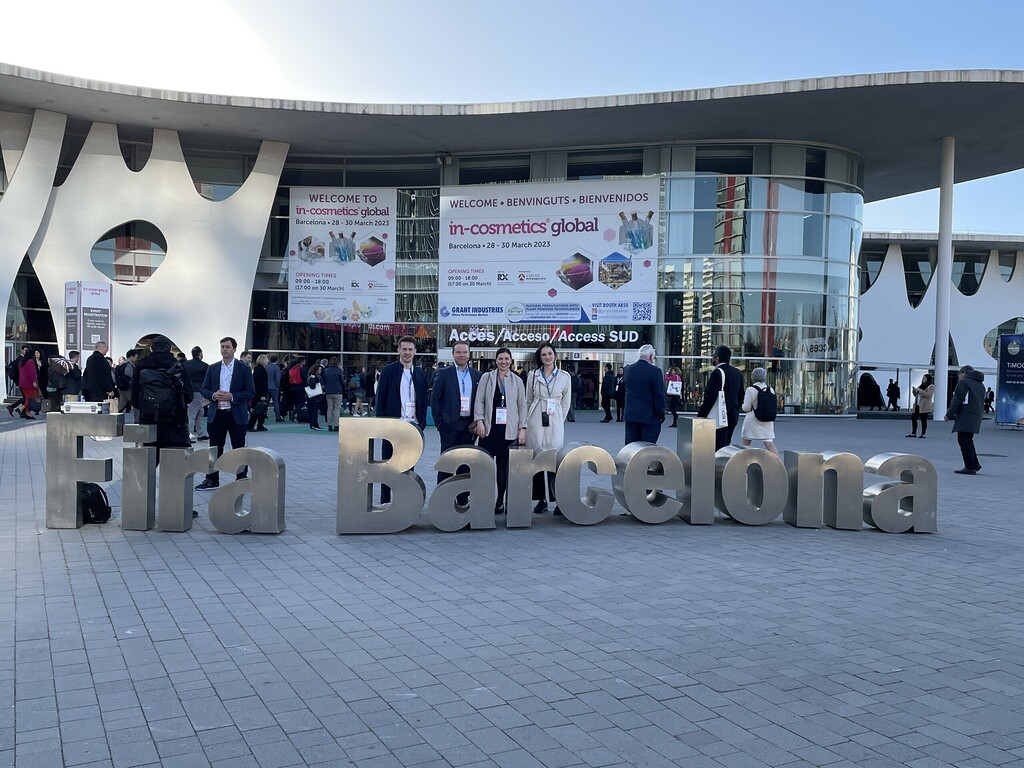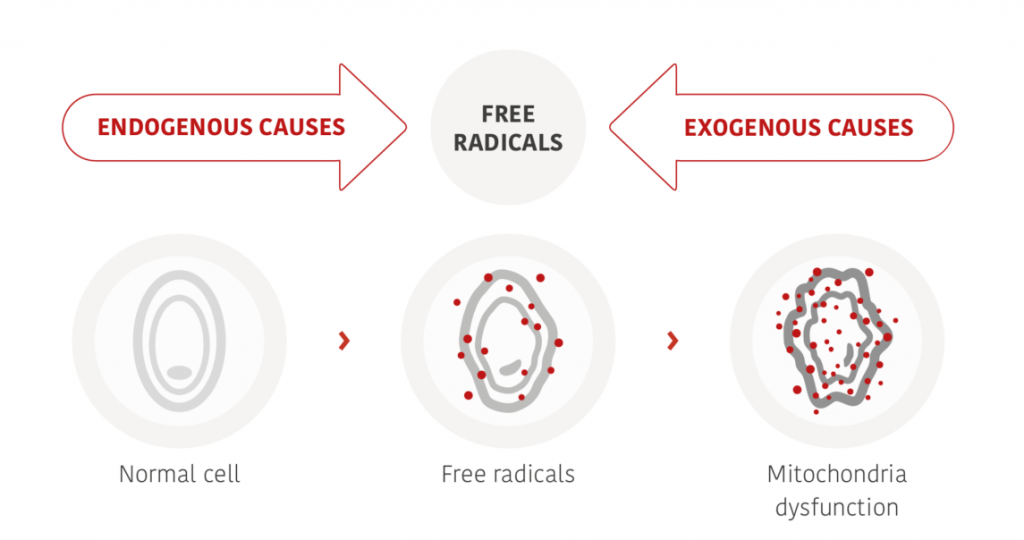Austrian natural astaxanthin – a unique active ingredient for biological cell protection
Natural astaxanthin from Austria
Abstract
As life expectancy continues to rise, healthy ageing is on everyone’s lips. We strive for eternal youth by maintaining general physical health, wellbeing and the natural functionality of our skin to avoid visible signs of age. A Sisyphean task because we cannot stop the ageing process of our body and skin, but we can positively influence and delay it through preventive strategies. Antioxidants play a very important role to inhibit ageing. The most effective antioxidant is astaxanthin which, due to its biological potential of cell protection, is considered the strongest natural antioxidant. Therefore, it is the perfect choice as anti-ageing ingredient since it acts as a protective shield to reduce environmental stress and skin ageing. Numerous clinical studies have already revealed its positive effects on skin ageing processes due to its unique molecular structure. BDI-BioLife Science can prove the effects of astaxanthin with in-house human clinical studies in the field of cosmetics with its branded active ingredient, an oleoresin with an astaxanthin content of 5%.
As protective shield, the skin is constantly exposed to external environmental influences and stress caused by internal factors such as athletic exertion and external factors such as UV rays. To maintain and support the skin as a protective barrier, numerous active ingredients are used in cosmetics. As part of these active ingredients, antioxidants can neutralise stress factors in the skin and can offer protection against those toxic substances. There is a variety of antioxidants such as vitamin C and coenzyme Q10, but natural astaxanthin has proven to be nature’s most powerful antioxidant yet discovered, with properties that by far surpass all its peers. In direct comparison, astaxanthin is 6,000 times more powerful than vitamin C and 100 times more powerful than vitamin E by neutralising singlet oxygen.[1]
Astaxanthin – the red diamond among antioxidants
Astaxanthin belongs to the carotenoid family, more precisely to the xanthophylls. In nature, the red pigment can be found in photosynthetic organisms such as bacteria, algae and yeasts. The highest concentrations of natural astaxanthin can be obtained from the freshwater microalga Haematococcus pluvialis. Due to its enormous antioxidant power, astaxanthin is considered the red diamond among radical scavengers and has been proven to be significantly more efficient at counteracting reactive oxygen species (ROS) compared to other antioxidants. Thanks to its unique molecular structure, it is non-pro-oxidative.[2] Astaxanthin is not only an incredibly powerful antioxidant, but also unique in terms of how it works in our bodies because it spans the cell membrane to protect the entire cell. The length and shape of an astaxanthin molecule allows it to span the cell membrane, having one end of the molecule in the lipid-soluble part of the cell and the other end in the water-soluble part (Figure 1).
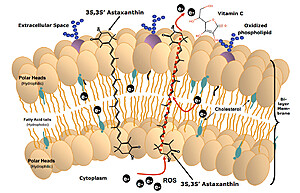
Figure 1: Astaxanthin spans the cell membrane in a transmembran orientation.
This makes astaxanthin distinctively characteristic of being able to protect the entire cell. Astaxanthin has been found capable of flowing throughout the entire body into the bloodstream, to the muscle tissue and skin as well as into various critical organs. This double feature of running through the body and being able to protect the entire cell makes astaxanthin a super-effective antioxidant and an anti-inflammatory agent for humans.[3]
In several human studies, astaxanthin has improved overall skin health and counteracted skin ageing by providing comprehensive protection against ROS-related damage. Positive effects on the human skin have been shown particularly regarding wrinkle depth, elasticity, moisture, age spots and skin texture. Astaxanthin improves skin elasticity by strengthening the collagen layer and revitalises photoaged skin by getting rid of free radicals in all skin layers. Moreover, it positively affects skin health both through supplemental nutrition and topical applications in cosmetics. To increase efficacy, these applications can also be combined.[4]
Skin ageing – Principle of cause and effect
Our skin is the outermost barrier against environmental impacts. Whenever the skin is exposed to reactive oxygen species (ROS) and free radicals, oxidative stress is occurring subsequently. Oxidative stress plays a crucial role in human skin damage. When singlet oxygen attacks cell membranes, it activates enzymes that lead to cell death, changes of skin appearance and the onset of active skin ageing processes. Singlet oxygen can also interfere with the DNA, triggering a series of cell processes that ultimately lead to inflammation.[5] Many age-related conditions are caused by increased levels of proinflammatory cytokines and cellular senescence. Due to increased environmental influences in the 21st century, a continuous low level of chronic inflammation increases leading to a gradual erosion of normal cell structure and functioning, which results in enhancing a slow but progressive ageing process also known as inflammageing. When skin structure and function decline, the skin becomes more sensitive and highly vulnerable to oxidative damage.[6]
A healthy individual normally has a certain level of antioxidants as natural defence mechanism to prevent free radical formation, maintain oxidative balance and protect the skin against oxidative damage and associated inflammations. However, through ongoing high exposure to ROS in our daily life, not only the barrier function of the skin deteriorates, but also the metabolic activity of cells and the intrinsic antioxidant level decrease, favouring intracellular oxidative stress and subsequent inflammatory reactions. High daily exposure to free radicals and the decreasing ability to protect ourselves from the formation and effects of these toxic reactive substances create a need to support our bodies in counteracting oxidative stress and subsequent cellular damage. The use of antioxidants in cosmetic formulations is one way to counteract the environmental effects on our skin.
Astaxanthin and its biological cell protection properties
Reactive oxygen species, responsible for extrinsic premature skin ageing, have increasingly aroused interest by the cosmetic industry as the human skin is permanently exposed to a pro-oxidative environment. These ROS are considered toxic derivatives of oxygen and cause skin damage as soon as the organism’s defence system is no longer capable of inactivating most ROS. Cells have a natural stress level (6.25% neg. control in Figure 2) that increases with exposure to ROS. Enhanced intracellular stress accelerates cellular ageing and promotes age-related skin changes such as wrinkles and age spots. In an in-vitro study, the influence of oleoresin with a content of 5% astaxanthin regarding antioxidant efficacy against ROS was investigated. To determine the potential antioxidant effect, primary human keratinocytes were treated with 0.01%, 0.05% and 0.1% oleoresin with a content of 5% astaxanthin for 24 hours. After incubation time, 10µM of DCFH-DA (chemical used to detect the presence of oxidative molecules) were applied for one hour. Subsequently, 500µM H2O2 were added to induce oxygen radicals (ROS). As a check, untreated cells without induced ROS (negative reference) and unprotected ROS-induced (positive) cells were used. As shown in Figure 2, the active ingredient is able to strongly reduce oxidative stress in a dose-dependent manner.[7]
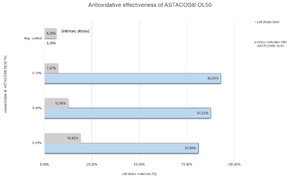
Figure 2: Cell stress reduction by oleoresin with a content of 5% astaxanthin in different concentrations dissolved in olive oil 24 hours after ROS induction by H2O2
Astaxanthin and its anti-ageing properties
Skin dryness, deep wrinkling, laxity, increasing transepidermal water loss (TEWL) and epidermal barrier disorders are typical characteristics of aged skin. Astaxanthin, derived from the microalga Haematococcus pluvialis, has proven several positive effects on the human skin, especially on wrinkle depth, elasticity, moisture, age spots and skin texture.
For an in-vivo study, 20 healthy female test subjects between 24 and 56 years of age (Ø 34) with normal skin were recruited. All tests were performed within one day and conducted on the inner side of the forearms. Test substances 0.05% ASTACOS® OL50 diluted in organic jojoba oil and 100% organic jojoba oil were tested.
To determine skin hydration, the Corneometer MPA 5 CPU was used. The skin roughness (firmness) was measured using the Frictiometer MPA 5 CPU. Results were evaluated using descriptive statistics and the Wilcoxon Rank Test (statistical model to ensure reliable results). The test subjects were instructed not to use any topical preparations on the test areas within a period of seven days before the study until the completion of the study. When the study started, the parameters were determined in the relevant test areas as a negative control sample.
Then the test products, 0.05% ASTACOS® OL50 diluted in jojoba oil and 100% jojoba oil, were applied to the corresponding test areas. After 2 hours of incubation time, the parameters of skin hydration and skin roughness (firmness) were measured again in the test zones. Even after a single application of 0.05% ASTACOS® OL50 diluted in jojoba oil, the skin roughness (firmness) and the hydration level of the skin had improved, as shown in Figure 3.[8]
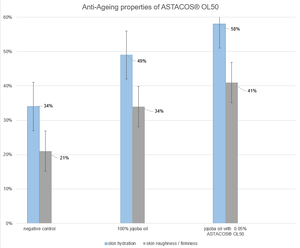
Figure 3: Change in skin hydration and skin roughness after application of 100% jojoba oil and and jojoba oil with 0.5% ASTACOS® OL50 after 2h incubation period
In another in-vivo efficacy study with a serum containing 0.05% of the active ingredient, the effectiveness of astaxanthin was confirmed in an application test that spanned over 4 weeks. A total of 25 female and male volunteers aged between 35 and 72 years (Ø 52.9 years; skin profile sensitive to atopic skin) participated in this in-vivo study and were supervised and monitored by a dermatologist. All participating subjects were instructed to use only the investigational product once a day and to maintain their usual skincare routine. The subjects reported a significant reduction in wrinkles and lines as well as a reduction in age spots and pigmentation. It is also noteworthy that over 60% of the participants described their skin as finer after completion of the study. [9][10]
Conclusion
Numerous research studies have led to the conclusion that astaxanthin can improve overall health of the skin and counteract skin ageing and inflammatory processes. Due to its multiple properties, astaxanthin acts exactly where it is needed and penetrates deep into the skin layers. In particular, protection against skin ageing as well as strong anti-ageing effects can be highlighted. Astaxanthin from microalgae is perfect for the use in leave-on products. When being extracted as oleoresin, the power antioxidant can be ideally incorporated into a wide variety of formulations such as facial applications, pretreatment and cell protection products, as it protects our skin against photoageing and supports anti-ageing. BDI-BioLife Science GmbH has developed a special COSMOS-certified and NATRUE-approved active ingredient to bring this unique antioxidant into cosmetic formulations.
ASTACOS® OL50 (Figure 4) is a vegan, animal testing-free ingredient, derived from the microalga Haematococcus pluvialis, containing 5% of natural astaxanthin. It has already shown its potential to neutralise free radicals in several in-vivo and in-vitro studies and has proven to be an efficient active ingredient for anti-ageing properties. With its in-house astaxanthin competence centre, BDI-BioLife Science supports its customers with expertise in processing and formulating ASTACOS® OL50, confirmed by various frame formulations and scientific dossiers.
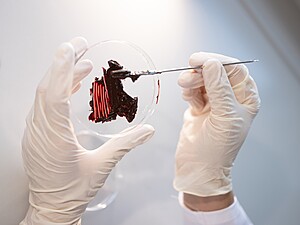
Figure 4: ASTACOS® OL50, oleoresin with an astaxanthin content of 5%
Read the article now in the SOFW Magazine
[1] Y. Nishida, E. Yamashita, and W. Miki, “Quenching Activities of Common Hydrophilic and Lipophilic Antioxidants against Singlet Oxygen Using Chemiluminescence Detection System,” Carotenoid Sci., vol. 11, no. December, pp. 16–20, 2007.
[2] R. R. Ambati, P. S. Moi, S. Ravi, and R. G. Aswathanarayana, “Astaxanthin: Sources, extraction, stability, biological activities and its commercial applications – A review,” Mar. Drugs, vol. 12, pp. 128–152, 2014.
[3] B. Capelli, S. Talbott, and L. Ding, “Astaxanthin sources: Suitability for human health and nutrition,” Funct. Foods Heal. Dis., vol. 9, no. 6, pp. 430–445, 2019.
[4] K. Tominaga, N. Hongo, M. Karato, and E. Yamashita, “Cosmetic benefits of astaxanthin on human subjects,” Acta Biochim. Pol., vol. 59, no. 1, pp. 43–47, 2012.
[5] K. Scharffetter-Kochanek et al., “Photoaging of the skin from phenotype to mechanisms,” Exp. Gerontol., vol. 35, no. 3, pp. 307–316, 2000.
[6] S. M. Pilkington, S. Bulfone-Paus, C. E. M. Griffiths, and R. E. B. Watson, “Inflammaging and the Skin,” J. Invest. Dermatol., vol. 141, no. 4, pp. 1087–1095, 2021.
[7] D. G.-R. institute for reliable Results, “Physiological/Histological in vitro Expertise,” no. March, 2021.
[8] Dr. Hauck R&D GmbH, “Efficacy Test in vivo conducted with ASTACOS OL50 (Cosmetic Study),” 2021.
[9] D. G. K. (Institute for E. D. at Witten/Herdecke, “REPORT über einen Anwendungs- und Verträglichkeitstest des Prüfpräparates,” 2021.
[10] T. Seki, H. Sueki, H. Kohno, and K. Suganuma, “Effects of astaxanthin from Haematococcus pluvialis on human skin,” pp. 98–103, 2001.
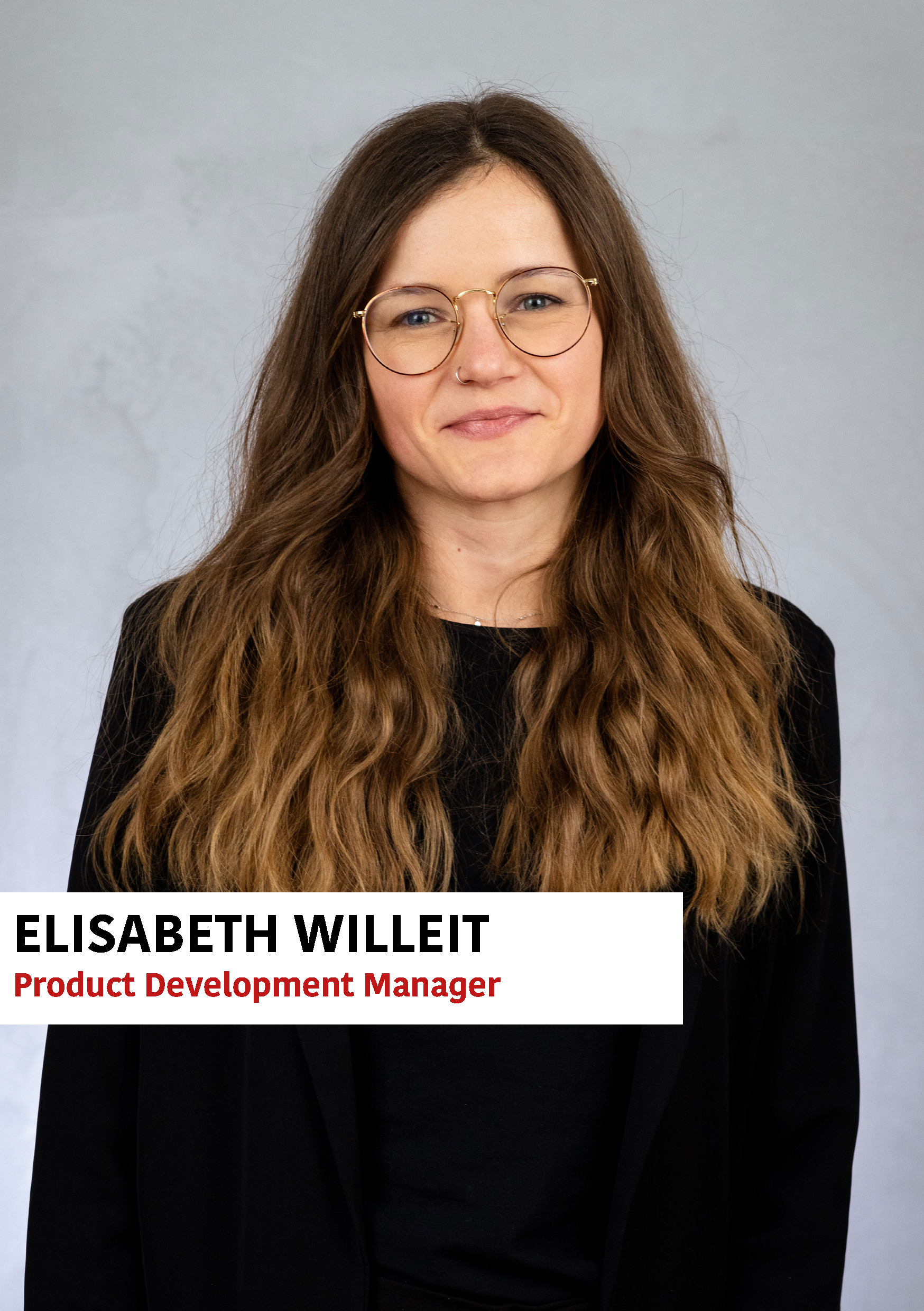
Elisabeth Willeit, MSc.
Elisabeth is Product Development Manager with a focus on Regulatory Affairs at BDI-BioLife Science. In addition to her degree in food product and process development at FH Joanneum, she has professional experience in the food industry. She works as an interface between sales, quality management and product development and deals with regulatory affair issues.
